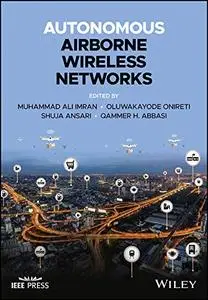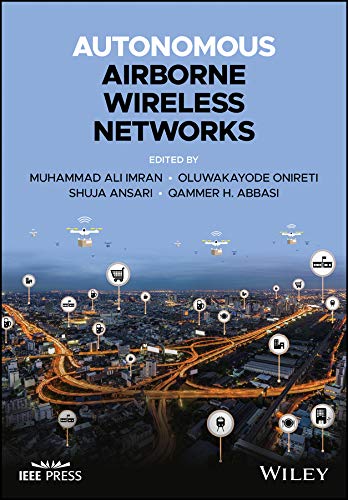Autonomous Airborne Wireless Networks
by Imran, Muhammad Ali; Onireti, Oluwakayode; Abbasi, Qammer H.
English | 2021 | ISBN: 1119751683 | 323 pages | True PDF | 8.8 MB
by Imran, Muhammad Ali; Onireti, Oluwakayode; Abbasi, Qammer H.
English | 2021 | ISBN: 1119751683 | 323 pages | True PDF | 8.8 MB
Discover what lies beyond the bleeding-edge of autonomous airborne networks with this authoritative new resource
Autonomous Airborne Wireless Networks delivers an insightful exploration of recent advances in the theory and practice of using airborne wireless networks to provide emergency communications, coverage and capacity expansion, information dissemination, and more. The distinguished engineers and editors have selected resources that cover the fundamentals of airborne networks, including channel models, recent regulation developments, self-organized networking, AI-enabled flying networks, and notable applications in a variety of industries.
The book evaluates advances in the cutting-edge of unmanned aerial vehicle wireless network technology while offering readers new ideas on how airborne wireless networks can support various applications expected of future networks. The rapidly developing field is examined from a fresh perspective, one not just concerned with ideas of control, trajectory optimization, and navigation.
Autonomous Airborne Wireless Networks considers several potential use cases for the technology and demonstrates how it can be integrated with concepts from self-organized network technology and artificial intelligence to deliver results in those cases. Readers will also enjoy:
A thorough discussion of distributed drone base station positioning for emergency cellular networks using reinforcement learning (AI-enabled trajectory optimization)
An exploration of unmanned aerial vehicle-to-wearables (UAV2W) indoor radio propagation channel measurements and modelling
An up-to-date treatment of energy minimization in UAV trajectory design for delay tolerant emergency communication
Examinations of cache-enabled UAVs, 3D MIMO for airborne networks, and airborne networks for Internet of Things communications
Perfect for telecom engineers and industry professionals working on identifying practical and efficient concepts tailored to overcome challenges facing unmanned aerial vehicles providing wireless communications, Autonomous Airborne Wireless Networks also has a place on the bookshelves of stakeholders, regulators, and research agencies working on the latest developments in UAV communications.



